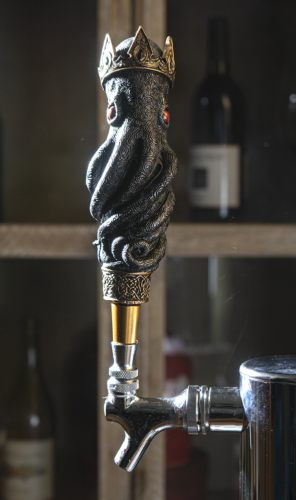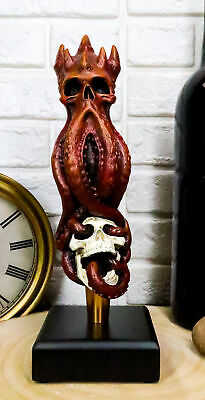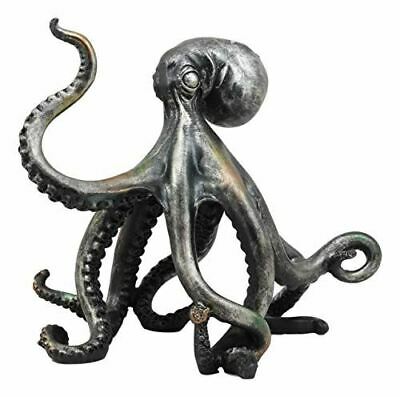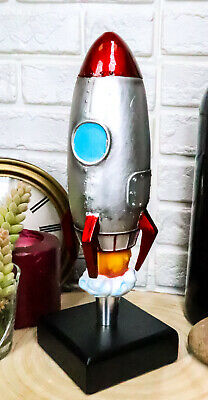-40%
6 Marine Animal Slide Box Set in Clear Square Block Education Specimen SSDD74M1
$ 20.06
- Description
- Size Guide
Description
Insect Collection Set - 6 Marine Animal Specimen Slide (in 6 square clear Lucite Block with a Magnifier) SSDD74M1 6 genuine different Marine Animals permanently encased in clear lucite material (in 6 separate individual square block). The specimens are crystal clear, indestructible and transparent. Safe, authentic and completely unbreakable product put living Animals right at your fingertips! Anyone can safely explore the Animals from every angle.It is clear enough for microscope observation.
There is a Magnifier in each set for close-up observation!
Size of each block is 75x75x9 mm (3x3x0.4 inch).
Weight of each block is 60 g.
The Nature Garden
6 Marine Animal Slide Box Set in Clear Square Block Education Specimen SSDD74M1
Insect Collection Set - 6 Marine Animal Specimen Slide (in 6 square clear Lucite Block with a Magnifier)
SSDD74M1
6 genuine different
Marine Animals
permanently encased in clear lucite material (in 6 separate individual square block). The specimens are crystal clear, indestructible and transparent. Safe, authentic and completely unbreakable product put living Animals right at your fingertips!
Anyone can safely explore the Animals from every angle.
It is clear enough for microscope observation.
There is a Magnifier in each set for close-up observation!
Size of each block is 75x75x9 mm (3x3x0.4 inch).
Weight of each block is 60 g.
Total weight of the whole set is 360 g and 520 g with packing box.
Size of the packing box : 181x121x35 mm (7.1x4.8x1.4 inch)
This is a handmade real animal specimen craft. Each one will be a bit different (specimen size, color and posture) even in the same production batch.
The picture in the listing is just for reference as we are selling multiple pieces with same picture.
*** These insects are all from China.
Jellyfish, Starfish, Clam Worm
Newt
, Angel Fish, 5 Seashells
***
Sand Jellyfish
-
Rhopilema
hispidum
Subkingdom
:
Radiata
Phylum
:
Cnidaria
Subphylum
:
Medusozoa
Class
:
Scyphozoa
Subclass
:
Discomedusae
Order
:
Rhizostomeae
Family
:
Rhizostomatidae
Genus
:
Rhopilema
Sand Jellyfish (Rhopilema asamushi or Rhopilema esculenta) is a species of jellyfish from the genus Rhopilema. Other species of jellyfish belonging to this group include Rhopilema hispidum and Rhopilema nomadic. They are inhabitants of the Indian Ocean and are found in locations like Hong Kong, Malaysia, Japan, China and some parts of the North Atlantic coastline. This species of jellyfish is very to rare to find in marine waters around the American coastlines.
Sand jellyfish is so called because of their distinct coloration and because the surface of the skin appears to have a granular texture. The bell of the sand jellyfish normally grows between 2- 4.5 cm in diameter. Unlike a number of other jellyfish, the sand jellyfish does not appear to have any distinct pattern of pigmentation. The bell has a definite curvature and the jellyfish appears dome-shaped. There are about 8 oral arms that emerge from the centre of the jellyfish. They are fused and appear like a mass of smoothed fur. They usually protrude out of the middle of the sand jellyfish like an inverted pyramid. This part of the sand jellyfish's body is perhaps its stoutest part and appear thick and leathery. A number of frills and filament may appear to be hanging from these oral arms.
Clamworm (Slender Ragworm -
Nereis pelagica
)
Phylum:
Annelida Class: Polychaeta Subclass: Errantia Order: Phyllodocida Family: Nereididae Scientific name: Nereis pelagica
Characteristics:
The slender ragworm
Nereis pelagica
is 6-21 cm long and has 30-100 segments with thin hairs (chaetae) on each segment. The legs, parapods, are positioned closer together than for instance the legs of
Hediste diversicolor
. A clearly visible blood vessel runs along the back. On the head there are two antennae, two large appendages or palps, and four pairs of tentacles. The most characteristic features are the two appendages or palps, on on each side of the head. These are very large and longer than the antennae. The color is usually golden or bronze, sometimes with a green tint.
Ragworms are predator worms with strong jaws; a large ragworm can produce quite a bite! They have lots of small legs, which explains why they are also called marine centipedes. They emerge out of the sea bottom to mate in the spring. Deep-sea fishermen like to use ragworms for bait because fish like to bite into them. However, these worms are more difficult to dig up out of the mudflats, making them more expensive than lugworms. That is why ragworms are cultivated. There are various kinds of ragworms. The king rag can grow as long as 40 centimeters. The estuary ragworm grows to 20 centimeters.
Habitat:
It lives in the tidal zone, or just below, under rocks or buried in sand or muddy substrate.
Distribution:
It is found in both the Atlantic and Pacific Oceans, on both hemispheres. It is also registered in the Mediterranean.
Flatbottom
S
eastar (
Northern Pacific Seastar)
-
Asterias amurensis
Phylum: Echinodermata Class: Asteroidea Order: Forcipulatida Suborder: Asteriadina Family: Asteriidae
Genus:
Asterias
Common names: Flatbottom seastar, Japanese Seastar, Japanese starfish, Nordpazifischer Seestern (German), North Pacific seastar, northern Pacific seastar, purple-orange seastar
Organism type: sea star
Originally found in far north Pacific waters and areas surrounding Japan, Russia, North China, and Korea, the northern Pacific seastar (Asterias amurensis) has successfully invaded the southern coasts of Australia and has the potential to move as far north as Sydney. The seastar will eat a wide range of prey and has the potential for ecological and economic harm in its introduced range. Because the seastar is well established and abundantly widespread, eradication is almost impossible. However, prevention and control measures are being implemented to stop the species from establishing in new waters.
Oriental Fire Belly Newt -
Cynops orientalis
Class: Amphibia Order: Caudata Family: Salamandridae Genus:
Cynops
Species:
C. orientalis
Description
The Chinese Fire-bellied Newt is the smallest species of the East Asian salamandrid genus
Cynops
. In its morphological features this species is distinctly different from other taxa in this genus. Head relatively large, a little longer than broad; snout rounded. Palatine teeth in two longitudinal series, commencing from front of choanae meeting anteriorly, gradually diverging posteriorly. Tongue small, practically free at the sides. Paratoids moderately developed, their posterior borders demarcating head from neck. Faint vertebral ridge. Tail rather short, approximately the length of the body. Margins of dorsal and ventral tail fins nearly parallel in breeding male, ending rather abruptly in a rounded, blunt tip. Skin rather smooth, especially in aquatic individuals. Lateral line organs clearly discernible in water.
Male smaller than female, especially the tail is shorter in the male than in the female. In the reproductive season, males have well developed dorsal and ventral tail fins, and a swollen cloaca.
Colour is dark-brown to black above, occasionally greyish. Colour of belly and throat lively red or orange with many rounded black spots. The base of each limb, anterior part of the cloaca and ventral tail fin are orange, posterior part of cloaca is black.
Total maximum length 7 to 9 cm.
Angel Fish -
Pterophyllum scalare
Family: Cichlidae (Cichlids), subfamily: Cichlasomatinae Order: Perciformes (perch-likes) Class: Actinopterygii (ray-finned fishes)
FishBase name: Freshwater angelfish
Max. size: 7.5 cm
Environment: benthopelagic; freshwater; pH range: 6.0 – 8.0; dH range: 5 - 13
Climate: tropical; 24 – 30°C; 6°N - 10°S, 78°W - 51°W
Importance: fisheries: ; aquarium: highly commercial; price category: not marketed/unknown
Resilience: High, minimum population doubling time less than 15 months(tm<1)
Vulnerability: Low vulnerability (10.00).
Distribution: South America: Amazon River basin, in Peru, Colombia, and Brazil, along the Ucayali, Solimões and Amazon rivers; rivers of Amapá (Brazil), Rio Oyapock in French Guiana; Essequibo River in Guyana. Morphology: Body compressed and disc-shaped; dorsal and anal spiny rays increasing in length from anterior to posterior part of the fin; first branched rays also very long; body height at anal fin level 1.07 to 1.29 times; body color silvery with dark vertical bars (7 in juveniles, 4 in adults).
Biology: Inhabit swamps or flooded grounds where the aquatic and riverine vegetation are dense and the water is either clear or silty. Its color is deeper in clear water. One of the most popular of all the tropical aquarium fish. Maximum length 15 cm. Aquarium keeping: in groups of 5 or more individuals; keep pairs in small tanks for breeding; minimum aquarium size 100 cm.
Dangerous: harmless
Item Specifics
Country of Manufacture :
China
Type :
Collector Plate
Animal :
Insect
Insect Breed :
Beetle
Material :
Resin
Country/Region of Manufacture :
China
Modified Item :
No
Payment
By Paypal
Shipping
Free shipping cost.
We send the goods to USA, Canada, UK, Australia, New Zealand, EU countries and some other European and Asian countries by E-express, a kind of fast postal service by Hong Kong Post. It usually takes about 6 to 10 working days for delivery.
We send the goods to other countries by registered airmail and will take about 8 to 14 working days for delivery.
Returns
Returns: We accept returns with any reason in 30 days.
Contact Us
We will answer buyer messages within 24 hours during working days.
The Nature Garden
From all around the world
DESCRIPTION
PAYMENT
SHIPPING
RETURN POLICY
CONTACT US
6 Marine Animal Slide Box Set in Clear Square Block Education Specimen SSDD74M1
Insect Collection Set - 6 Marine Animal Specimen Slide (in 6 square clear Lucite Block with a Magnifier)
SSDD74M1
6 genuine different
Marine Animals
permanently encased in clear lucite material (in 6 separate individual square block). The specimens are crystal clear, indestructible and transparent. Safe, authentic and completely unbreakable product put living Animals right at your fingertips!
Anyone can safely explore the Animals from every angle.
It is clear enough for microscope observation.
There is a Magnifier in each set for close-up observation!
Size of each block is 75x75x9 mm (3x3x0.4 inch).
Weight of each block is 60 g.
Total weight of the whole set is 360 g and 520 g with packing box.
Size of the packing box : 181x121x35 mm (7.1x4.8x1.4 inch)
This is a handmade real animal specimen craft. Each one will be a bit different (specimen size, color and posture) even in the same production batch.
The picture in the listing is just for reference as we are selling multiple pieces with same picture.
*** These insects are all from China.
Jellyfish, Starfish, Clam Worm
Newt
, Angel Fish, 5 Seashells
***
Sand Jellyfish
-
Rhopilema
hispidum
Subkingdom
:
Radiata
Phylum
:
Cnidaria
Subphylum
:
Medusozoa
Class
:
Scyphozoa
Subclass
:
Discomedusae
Order
:
Rhizostomeae
Family
:
Rhizostomatidae
Genus
:
Rhopilema
Sand Jellyfish (Rhopilema asamushi or Rhopilema esculenta) is a species of jellyfish from the genus Rhopilema. Other species of jellyfish belonging to this group include Rhopilema hispidum and Rhopilema nomadic. They are inhabitants of the Indian Ocean and are found in locations like Hong Kong, Malaysia, Japan, China and some parts of the North Atlantic coastline. This species of jellyfish is very to rare to find in marine waters around the American coastlines.
Sand jellyfish is so called because of their distinct coloration and because the surface of the skin appears to have a granular texture. The bell of the sand jellyfish normally grows between 2- 4.5 cm in diameter. Unlike a number of other jellyfish, the sand jellyfish does not appear to have any distinct pattern of pigmentation. The bell has a definite curvature and the jellyfish appears dome-shaped. There are about 8 oral arms that emerge from the centre of the jellyfish. They are fused and appear like a mass of smoothed fur. They usually protrude out of the middle of the sand jellyfish like an inverted pyramid. This part of the sand jellyfish's body is perhaps its stoutest part and appear thick and leathery. A number of frills and filament may appear to be hanging from these oral arms.
Clamworm (Slender Ragworm -
Nereis pelagica
)
Phylum:
Annelida Class: Polychaeta Subclass: Errantia Order: Phyllodocida Family: Nereididae Scientific name: Nereis pelagica
Characteristics:
The slender ragworm
Nereis pelagica
is 6-21 cm long and has 30-100 segments with thin hairs (chaetae) on each segment. The legs, parapods, are positioned closer together than for instance the legs of
Hediste diversicolor
. A clearly visible blood vessel runs along the back. On the head there are two antennae, two large appendages or palps, and four pairs of tentacles. The most characteristic features are the two appendages or palps, on on each side of the head. These are very large and longer than the antennae. The color is usually golden or bronze, sometimes with a green tint.
Ragworms are predator worms with strong jaws; a large ragworm can produce quite a bite! They have lots of small legs, which explains why they are also called marine centipedes. They emerge out of the sea bottom to mate in the spring. Deep-sea fishermen like to use ragworms for bait because fish like to bite into them. However, these worms are more difficult to dig up out of the mudflats, making them more expensive than lugworms. That is why ragworms are cultivated. There are various kinds of ragworms. The king rag can grow as long as 40 centimeters. The estuary ragworm grows to 20 centimeters.
Habitat:
It lives in the tidal zone, or just below, under rocks or buried in sand or muddy substrate.
Distribution:
It is found in both the Atlantic and Pacific Oceans, on both hemispheres. It is also registered in the Mediterranean.
Flatbottom
S
eastar (
Northern Pacific Seastar)
-
Asterias amurensis
Phylum: Echinodermata Class: Asteroidea Order: Forcipulatida Suborder: Asteriadina Family: Asteriidae
Genus:
Asterias
Common names: Flatbottom seastar, Japanese Seastar, Japanese starfish, Nordpazifischer Seestern (German), North Pacific seastar, northern Pacific seastar, purple-orange seastar
Organism type: sea star
Originally found in far north Pacific waters and areas surrounding Japan, Russia, North China, and Korea, the northern Pacific seastar (Asterias amurensis) has successfully invaded the southern coasts of Australia and has the potential to move as far north as Sydney. The seastar will eat a wide range of prey and has the potential for ecological and economic harm in its introduced range. Because the seastar is well established and abundantly widespread, eradication is almost impossible. However, prevention and control measures are being implemented to stop the species from establishing in new waters.
Oriental Fire Belly Newt -
Cynops orientalis
Class: Amphibia Order: Caudata Family: Salamandridae Genus:
Cynops
Species:
C. orientalis
Description
The Chinese Fire-bellied Newt is the smallest species of the East Asian salamandrid genus
Cynops
. In its morphological features this species is distinctly different from other taxa in this genus. Head relatively large, a little longer than broad; snout rounded. Palatine teeth in two longitudinal series, commencing from front of choanae meeting anteriorly, gradually diverging posteriorly. Tongue small, practically free at the sides. Paratoids moderately developed, their posterior borders demarcating head from neck. Faint vertebral ridge. Tail rather short, approximately the length of the body. Margins of dorsal and ventral tail fins nearly parallel in breeding male, ending rather abruptly in a rounded, blunt tip. Skin rather smooth, especially in aquatic individuals. Lateral line organs clearly discernible in water.
Male smaller than female, especially the tail is shorter in the male than in the female. In the reproductive season, males have well developed dorsal and ventral tail fins, and a swollen cloaca.
Colour is dark-brown to black above, occasionally greyish. Colour of belly and throat lively red or orange with many rounded black spots. The base of each limb, anterior part of the cloaca and ventral tail fin are orange, posterior part of cloaca is black.
Total maximum length 7 to 9 cm.
Angel Fish -
Pterophyllum scalare
Family: Cichlidae (Cichlids), subfamily: Cichlasomatinae Order: Perciformes (perch-likes) Class: Actinopterygii (ray-finned fishes)
FishBase name: Freshwater angelfish
Max. size: 7.5 cm
Environment: benthopelagic; freshwater; pH range: 6.0 – 8.0; dH range: 5 - 13
Climate: tropical; 24 – 30°C; 6°N - 10°S, 78°W - 51°W
Importance: fisheries: ; aquarium: highly commercial; price category: not marketed/unknown
Resilience: High, minimum population doubling time less than 15 months(tm<1)
Vulnerability: Low vulnerability (10.00).
Distribution: South America: Amazon River basin, in Peru, Colombia, and Brazil, along the Ucayali, Solimões and Amazon rivers; rivers of Amapá (Brazil), Rio Oyapock in French Guiana; Essequibo River in Guyana. Morphology: Body compressed and disc-shaped; dorsal and anal spiny rays increasing in length from anterior to posterior part of the fin; first branched rays also very long; body height at anal fin level 1.07 to 1.29 times; body color silvery with dark vertical bars (7 in juveniles, 4 in adults).
Biology: Inhabit swamps or flooded grounds where the aquatic and riverine vegetation are dense and the water is either clear or silty. Its color is deeper in clear water. One of the most popular of all the tropical aquarium fish. Maximum length 15 cm. Aquarium keeping: in groups of 5 or more individuals; keep pairs in small tanks for breeding; minimum aquarium size 100 cm.
Dangerous: harmless
Item Specifics
Country of Manufacture :
China
Type :
Collector Plate
Animal :
Insect
Insect Breed :
Beetle
Material :
Resin
Country/Region of Manufacture :
China
Modified Item :
No
Payment
By Paypal
Shipping
Free shipping cost.
We send the goods to USA, Canada, UK, Australia, New Zealand, EU countries and some other European and Asian countries by E-express, a kind of fast postal service by Hong Kong Post. It usually takes about 6 to 10 working days for delivery.
We send the goods to other countries by registered airmail and will take about 8 to 14 working days for delivery.
Returns
Returns: We accept returns with any reason in 30 days.
Contact Us
We will answer buyer messages within 24 hours during working days.
All right reserved.
Shop Category
Store Home
Fossils
◈ Insects
◈ Trilobite
◈ Sea animals
Tektite
◈ Loose lots
◈ Single stone
Lapis Lazuli
▷ Polished stones
♢ Loose lots
♢ Single stones
▷ Rough stones
♢ Loose lots
◈ Craft items
Turquoise
◈ Natural turquoise
◈ Turquoise substitutes
Stone carving
Rough Stone & mineral
◈ Single piece
◈ Loose lots
Polished Stone & mineral
◈ Single piece
◈ Loose lots
Rough ruby & sapphire
◈ Ruby
◈ Sapphire
Star Ruby & Sapphire
◈ Star Ruby - Opaque
◈ Star Ruby - Transparent
◈ Blue Star Sapphire
◈ Star Sapphire - other colors
Animal specimen items
◈ Single specimen
◈ Life cycle
◈ Collection set
◈ Key ring
◈ Bracelet or bangle
◈ Necklace or pendant
◈ Magnet
◈ Ring
◈ Hanger
◈ Cabochon
◈ Sphere, ball
◈ Laminated specimen
◈ Computer mouse
◈ Stapler
◈ Pen
◈ Bottle Opener
◈ Dome paperweight
◈ Earring
◈ Skeleton
◈ Fish
◈ Butterfly
Plant specimen
◈ Flower
◈ Leaf
◈ Life Cycle
◈ Collection Set
◈ Laminated items
◈ Seed or root
Stone, mineral, fossil box set
Paper Cuts
Jewelry crafts
Other
Hot Item
Fine Ground Cinnabar Crystal Tiny pieces 40 gram Lot
USD 18.00
10 Mohs Scale Stone Set clear plastic box Learning Real Specimen Kit
USD 16.00
Powdered Cinnabar Crystal Native Pigment Material 40 gram Lot
USD 18.00
Black Indochinite Tektite Stone 10 pieces Plastic Box Set Natural Specimen Kit
USD 14.00
Black Indochinite Tektite Stone 50 to 100 gram size Large Pieces 2 Pieces Lot
USD 18.00
Picture
New List Item
Turquoise substitute Dyed Howlite Rough Stone Slabs 400 gram Lot
USD 19.99
Opaque Star Ruby Oval 5x3 mm Flat Cabochon 6 Rayed Lab-created Stone
USD 5.99
Insect Necklace Little Stag Beetle Prosopocoilus blanchardi Specimen SD13 Clear
USD 7.99
Insect Necklace Red Bug Dindymus rubiginosus Specimen YD07 Glow
USD 6.99
Turquoise Stone Oval 22x16 mm Flat Cabochon 112.5 Carat 9 pieces
USD 27.99
Custom Item
Powered by SoldEazy


















